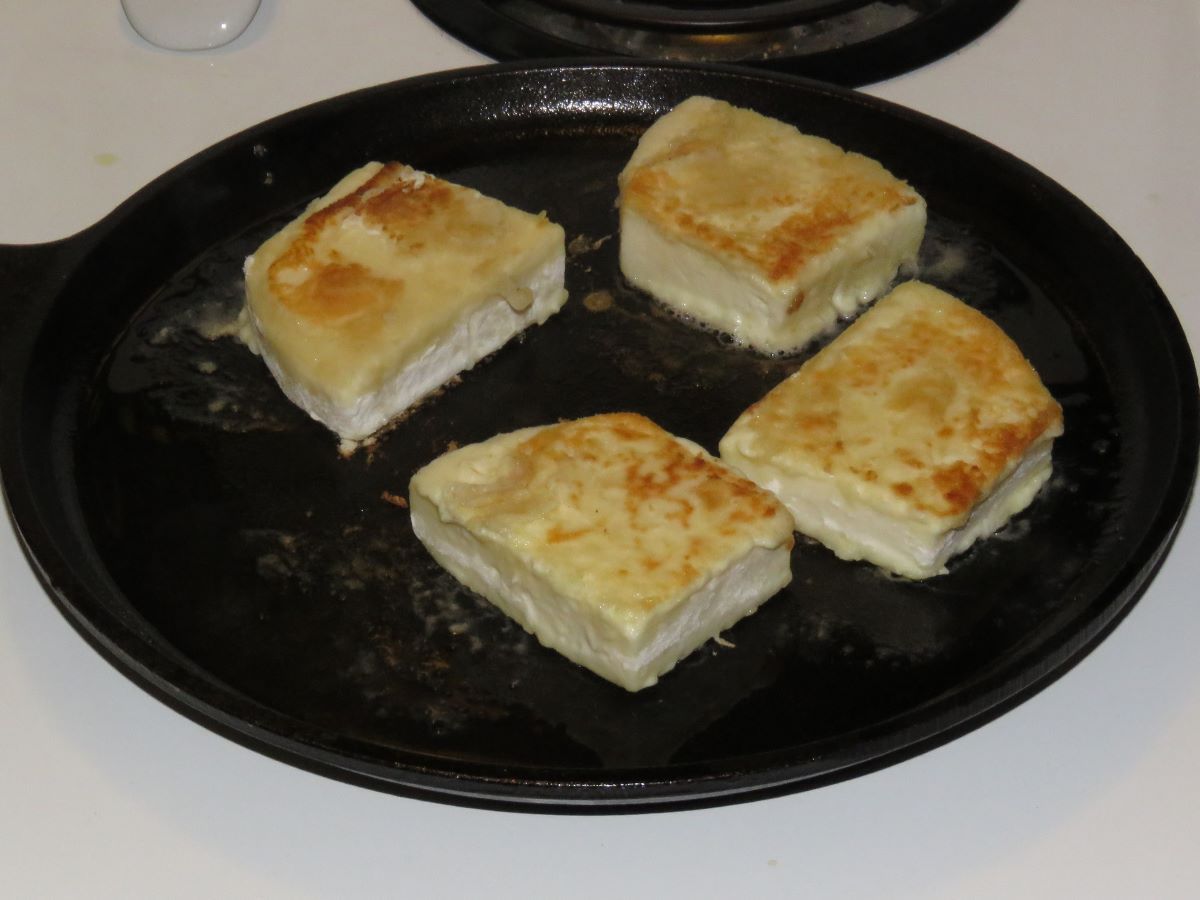We just made our second Kefalotyri, and since the first one was such a success, I thought I would share the recipe and technique with you. First, here is the recipe:
Kefalotyri Cheese(Recipe loosely based on Gavin Webber's "Little Green Cheese" Video, and a recipe from here on the Cheese Forum, with the assistance of Members)
It takes about 6 hours from the start to the overnight pressing.
Equipment Needed:1/2 tsp. 1/2 Tbsp.
3/16 tsp. Flocculation Bowl
1/8 tsp. Both Curd Cutters
1/4 cup Whisk (Small)
3 Stainless Cups Two Timers
Rectangle Mould Cheese Cloth for Mould and Colander
Skimming Ladle Colander
Slotted Spoon Butter Knife
Dinner Knife Two Thermometers
Ingredients:8 L Homo Milk (3.25%)
1 L Coffee Cream (18%)
Total – 9 L at 4.9% Butterfat
1/2 tsp. Calcium Chloride, dissolved in ¼ cup cool water
1/8 tsp. Culture (MA4002)
1/8 tsp. Lipase, dissolved in ¼ cup cool water – let sit 20 min.
3/16 tsp. double strength Liquid Rennet, dissolved in ¼ cup cool water – let sit 30 min.
2 Tbsp. Salt (4 X 1/2 Tbsp.)
Method:Heat the milk to 90° F. While heating, add the calcium chloride solution and stir well to combine, and add the lipase solution (we used mild Calf lipase) and stir well. Sprinkle the starter over the surface of the milk, wait 2 minutes for the powder to rehydrate, then stir well. Cover and allow the milk to ripen for 40 minutes.
Add the diluted rennet through a skimming ladle and stir gently with an up-and-down motion for 30 seconds. Top stir for 30 seconds. Cover and let sit at 90° F based on the flocculation time multiplied by 2.5X. Check for a “sloppy” break (about 30-40 minutes). The curd is quite fragile, so handle with care!
Cut the curd vertically into 3/4” columns. Rest 5 minutes, but each minute gently agitate the pot to make the columns of curds sway a bit and discharge some whey into the spaces between. Cut the curd horizontally into 1/4” pieces. Rest 5 minutes, again shaking the pot gently to separate the curds and help them heal. Use the whisk gently to reduce the curds to about 1/4”.
Heat the curds to 124° F by increasing the temperature slowly over a period of 60 minutes (3° F every 5 minutes). Using the slotted spoon, gently stir the curds while heating them. Curds should eventually reduce to rice size. Check the curds with a grip test. If still soft, cook longer, maintaining the temperature. About 10 minutes extra worked OK. Curds should compress into a ball when squeezed in the palm, and then separate easily when teased with the thumb. They should be springy. Let the curds rest for 5 minutes to settle in the pot.
Pour off the curds and whey into a cheese cloth lined colander. Allow to drain. Separate the curds by hand until the consistency is like scrambled eggs. Add the salt 1/2 Tbsp. at a time, mixing the salt in gently but thoroughly with each addition. Wait 2 minutes and repeat 3 more times (4 X = 2 Tbsp. total)
Lift the curds in the cheese cloth and place into the mould, fold over the cloth and place the follower on top. (If they won’t fit, use a Medium Cylinder mould.) Slowly increase the pressure to 10 lbs. (~0.5 psi), insuring the whey only drips out, not flowing in a stream. Once at 10 lbs., press for 15 minutes. Remove from the cheesecloth, gently flip, and using the proper cheese cloth for the mold, press as follows, flipping and redressing the cheese each time:
20 lbs. (~1 psi) for 30 minutes
40 lbs. (~2 psi) for 60 minutes
85 lbs. (3.5 psi) overnight (10-12 hours) Keep the room at 72° F.
The next morning, turn down the heat in the room. Flip the cheese, trim if necessary, and press at 10 lbs. for 30 minutes without the cheese cloth to remove cloth marks.
Air dry at 55° F (cool room temp.) for 3-5 days or until well dried, flipping twice daily. Wax the cheese or vacuum bag it, and age it for 6 weeks at 55° F in the cheese cave, flipping daily. If you vacuum bagged it, open the bag and dry it, and re-bag. Age for another 6 weeks in the kitchen wine fridge (46° F). Turn it weekly.
Sample the cheese. Vacuum-bag or re-wax the remainder of the brick and age another 3, 6 and 9 months. (max. 1 year from date of making cheese). This cheese can be used to make Greek Saganaki (fried cheese).

That is a photo of Saganaki made from our first make of Kefalotyri.... It can also be eaten as a table cheese.
Photos of this make in the next post....
Bob